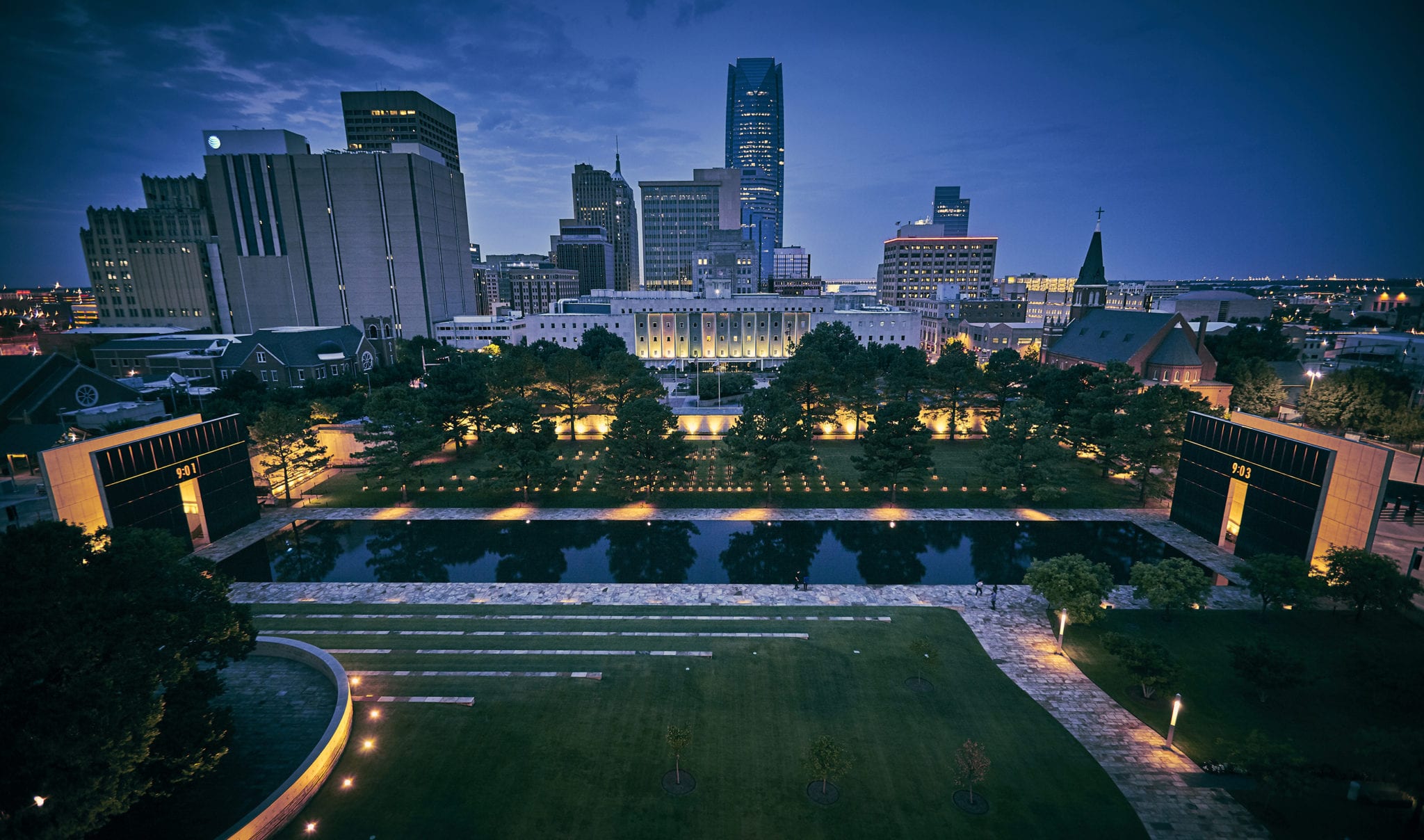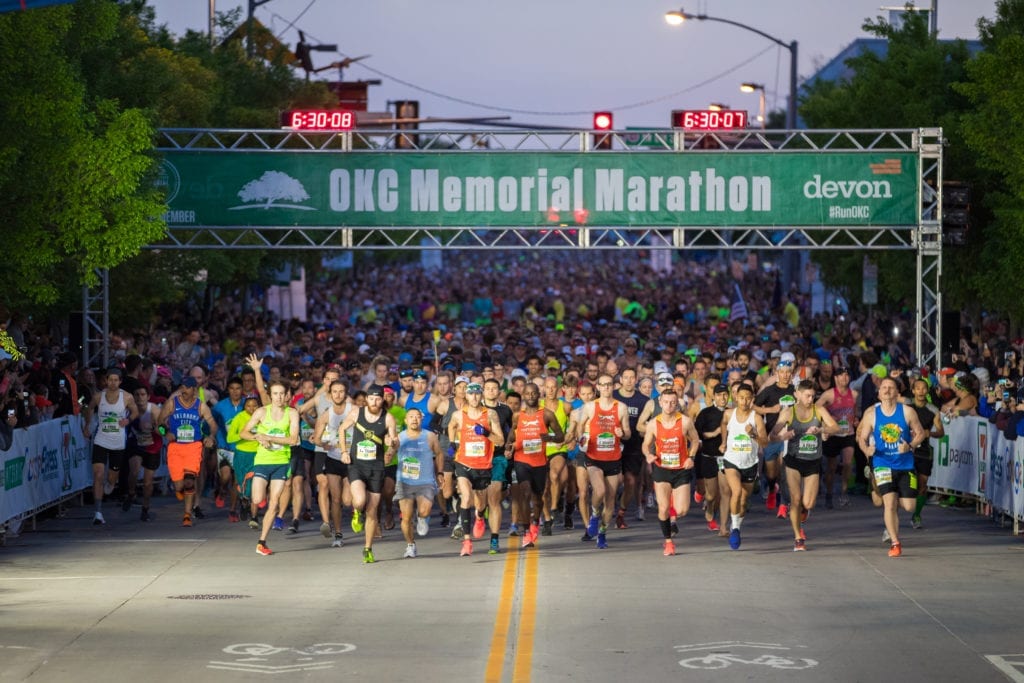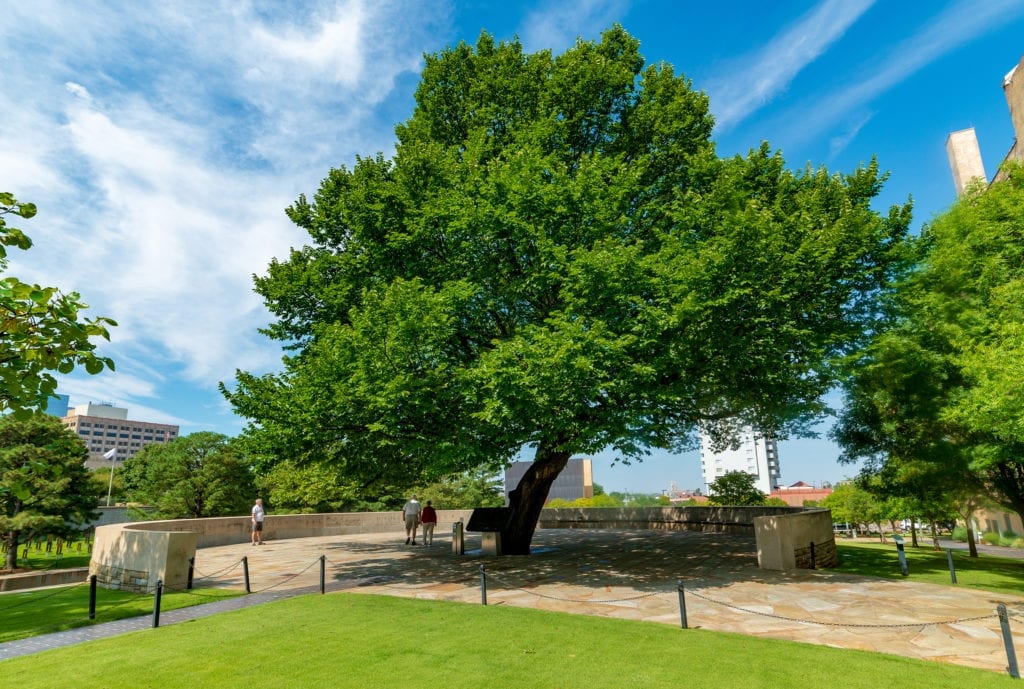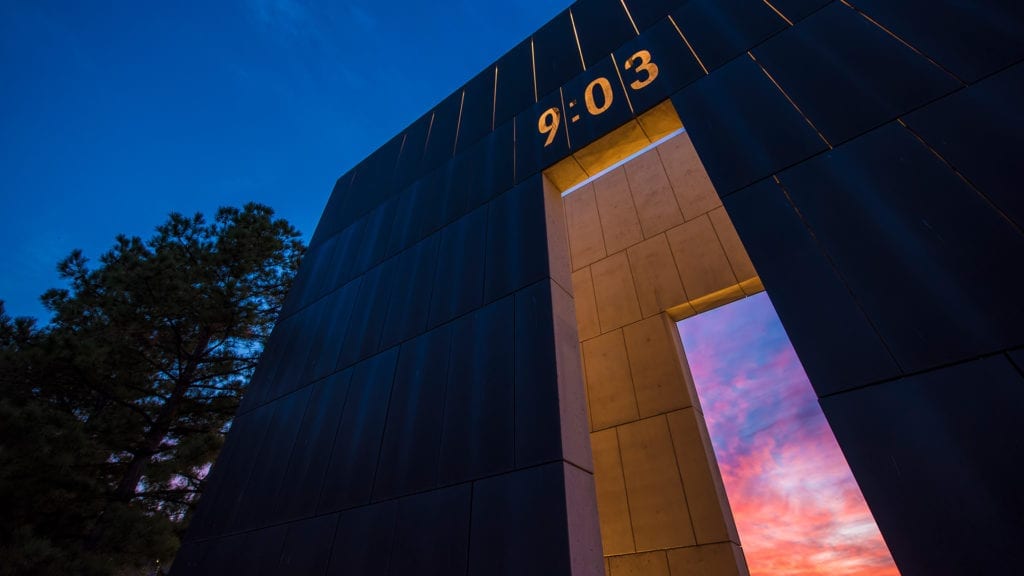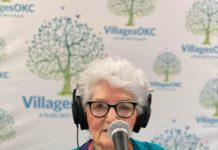This month marks the 25th anniversary of the bombing of the Alfred P. Murrah Federal Building. The Oklahoma City National Memorial and Museum wants this year’s commemoration to acknowledge the past while looking toward a different future.
Nearly everyone living in Oklahoma a quarter-century ago recalls that tragic moment, 9:02 a.m. April 19, when 168 people died. Reverberations from the deadliest act of domestic terrorism in recent history are felt today.
The outdoor memorial, on the bombing site in downtown OKC, embraces symbolism: 168 empty chairs, the 9:01 a.m. and 9:03 a.m. gates, a reflecting pool, a plaza and overlook, a rescuer’s orchard, a survivor wall and the Survivor Tree. The adjacent museum provides an extensive history of the tragedy, its aftermath and a series of lessons learned since then.
Photos courtesy OKC Memorial and Museum
“It’s not a happy story; it’s a hard story, but there’s so much good that came out of it,” says Kari Watkins, executive director of the memorial and museum. “And when you’re in the museum, you realize that people did the very best they could and they figured out how to come out of it stronger and better.”
The memorial opened on the fifth anniversary in 2000; the museum followed in February 2001. At the time, there was little precedent for how to respectfully memorialize such tragedies. A task force appointed by the mayor and governor decided what should happen.
“We didn’t have a lot of help because it hadn’t been done,” Watkins says, “so a lot of people have turned to Oklahoma City to ask for help on how to memorialize, how to remember.”
During the 168 days leading up to the 25th anniversary, statewide media donated space for a remembrance countdown honoring those who died, those who survived, and first responders. Visitors also can take eyewitness tours led by survivors, family members and first responders. Just before this year’s anniversary, the museum unveils an augmented reality app that can be used to enhance a visit.
During anniversary week, panel discussions include investigators, prosecutors, journalists, family members, survivors and presenters talking about forgiveness – all with a remembrance of the past. With a focus on the future, discussions center on education and how Oklahoma City has helped other communities with their memorials.
Anniversary week was set to culminate with the Memorial Marathon, but it has been postponed to Oct. 4 due to COVID-19. The marathon began in 2001 with 5,000 participants but is expected to see over 25,000 this year.
The museum has grown, too, especially in the number of evidentiary artifacts that have been acquired. But the difficult storyline hasn’t changed.
Watkins says the easiest choice for the community would have been to rebuild on the site and put up a plaque. Instead, the entire 3½ acres were dedicated to remembering the tragedy.
“It’s a symbol of strength of our people and courage of our people, and [visitors] realize that,” Watkins says.






















